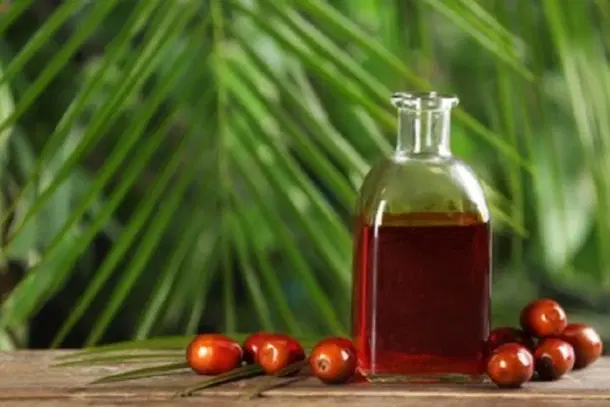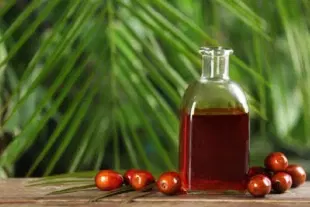Economy
Palm Oil Mission: India Looks To Cut Huge Imports By Promoting Local Production
Sourav Datta
Aug 21, 2021, 06:10 PM | Updated 06:10 PM IST
Save & read from anywhere!
Bookmark stories for easy access on any device or the Swarajya app.


The Government of India recently approved a scheme to increase the production of domestic crude palm oil (CPO). The National Mission on Edible Palm Oils – Oil Palm, has been launched as a Centrally-sponsored scheme to increase the land under cultivation for palm oil.
The move comes as a response to India’s high dependence on Palm oil imports, with the country importing almost 98 per cent of its CPO requirements from Indonesia and Malaysia. Though India has plantations, these plantations have contributed to around 3 lakh tonnes of CPO, whereas, the country imports more than 80 lakh tonnes each year.
The country’s dependence on palm oil is quite evident from the fact that the country’s palm oil imports account for almost 60 per cent of the total edible oil imports according to reports. The import bills run up to almost 10 billion dollars annually.
Among the first uses of palm oil by the organised sector was for the production of the “Dalda” brand in 1937, with its classic palm tree logo. The hydrogenated palm oil was popularised as a cheaper version of ghee, and still remains popular among the lower strata of the society. Despite health concerns, today, palm oil has become a part of everyday cuisine, with reportedly 90 per cent of palm oil used for cooking purposes.
Low Domestic Production:
The domestic production of crude oil has remained low due to several factors. Indian farmer have small lands, and a bad financial situation. Oil palm trees take four to six years to mature and bear fruit, making it difficult for farmers to manage their cash flows. The lack of a minimum selling price arrangement had also deterred farmers from taking the risks of planting palm. Smaller lands do not allow for the efficiency that larger plantations enjoy.
The largest growers of Palm were corporates like Ruchi Soya, Godrej Agrovet, among others who have tripartite agreements with growers and the states. Growers in a particular area supply to a particular oil processing company. For these companies, the contracts help secure raw material, while guaranteeing income for the farmers.
New Incentives:
However, the government has now implemented various measures like price assurance and input funding to incentivise smaller farmers to grow palm oil. The farmers will receive a price-assurance from the government for Fresh Fruit Bunches (FFBs). Palm oil is extracted from FFBs. The price for FFBs will be set as an average of the annual average price of CPO adjusted with the wholesale price index.
The buyers would have to pay 14.3 per cent of the CPO to the farmer, with the government paying an extra two per cent to farmers in the north-east and the Andaman. The focus on Andaman and the North-East is because of the climate that is conducive for the growth of oil palm. Input assistance for planting further has been more than doubled from Rs 12,000 per hectare to Rs 29,000 per hectare. Several other incentives have been introduced to get farmers interested in palm oil farming.
Who Benefits from the Changes?
Apart from farmers, companies that deal in palm oil are likely to benefit from these measures. So far, these companies were forced to import CPO and process it at their plants. Importing leaves them vulnerable to supply chain shocks, un-hedged foreign exchange fluctuations and any changes in relationships between countries.
For instance, in January 2020, Indian importers were reportedly asked to lower the imports from Malaysia, because the Malaysian Prime Minister had criticised Citizenship Amendment Act and the Indian government’s stance on the Kashmir issue.
In addition, it also reduces any adverse effects from changes in taxation rates. Malaysian and Indonesian governments often hike export duties in order to stabilise the domestic palm prices and support the refining industries.
Among listed firms, edible oil companies like Ruchi Soya, Godrej Agrovet among others, stand to benefit from the recent changes as it would help them secure raw material, and reduce any exposure to foreign exchange risks. Gemini Foods, among the largest edible oil players, has recently applied for an IPO, also stands to benefit from the policy. However, a company like Adani-Wilmar, which has secured its raw material supply under contracts with Wilmar International, the policy might help diversify its vendors and reduce forex risks.
Even then, it will take quite a few years until India reduces its dependence on imports and manages to reduce its dependence on imports. Oil palms have a relatively long growth period, which would mean that India would have to wait for at least six to seven years before it truly enjoys the fruits of the policy.
Environmental Concerns:
Concerns about sustainability and water requirements of the oil palms have been raised by several environmental activists. An adult oil palm requires around 200-250 litres of water each day. In contrast, an adult coconut palm requires 55-120 litres of water each day. The water-intensive nature of the plants can cause put pressure on the area’s water requirements.
India has been trying to reduce its dependence on palm oil imports since 1992. However, due to the factors mentioned above, so far farmers have not been ready to adopt palm production. The growth of area under cultivation has inched from 8,585 hectares in 1991 to 275,018 hectares in 2019.
With the advent of new policies, it remains to be seen whether India can reduce its dependence on imported edible oil.





